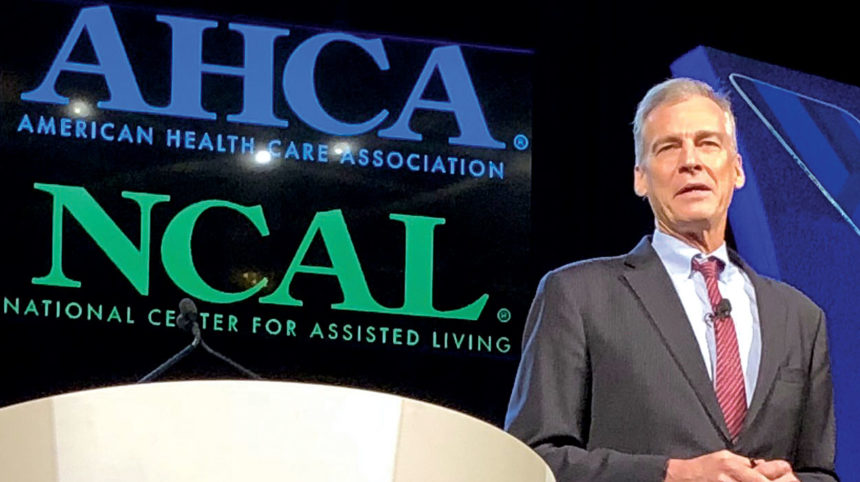
The largest U.S. nursing home association is appealing to federal authorities to reconsider plans to affix a “warning” symbol by nursing homes cited for certain abuse deficiencies.
An open-palm red icon is to be placed next to offenders on the consumer-facing Nursing Home Compare website starting Oct. 23.

Late Friday, however, the head of the American Health Care Association sent a four-page letter to Centers for Medicare & Medicaid Services Administrator Seema Verma urging at least a change to the type of icon used, from a “stop” symbol to something more in line with the intended “consumer alert” message it portends to be. The bid mirrors an argument made by McKnight’s Long-Term Care News on Wednesday, less than two days after the icon policy was announced.
While lauding CMS’s campaign to increase transparency around possible abuse, neglect or exploitation, AHCA President and CEO Mark Parkinson criticized the new policy because facilities branded with the icon would have their highest-possible health inspection rating capped at two stars and their highest overall possible rating limited to four stars.
This, he explained, would overemphasize three citation areas at the expense of 246 others, including staffing, antipsychotics use and rehospitalization rates.
“The capping of two stars results in over 95 percent of SNFs with a survey star rating of three or higher losing one, two, or three stars in their overall rating,” Parkinson noted.
The image of a bright “stop” icon is what drives concerns, especially if it is allowed to linger online after the reason for its placement might already be fixed.
“Such a symbol implies people should avoid the nursing home altogether, rather than use the information as a warning of caution to investigate further,” Parkinson wrote to Verma. “We recommend using a symbol to suggest either ‘caution’ or need to investigate further, as you might see on the roadway.”
A yellow triangle with an exclamation point, for example, “would be more appropriate.”
Parkinson also noted inconsistencies in the survey process that would make the new policy unevenly applied across states, particularly concerning D-level instances where no actual harm is involved.
The association leader also renewed a call to use customer satisfaction data in the star-ratings formula. He said that collecting and reporting on customer satisfaction would “be a proactive step to help combat abuse and neglect.”
“The nursing home sector is the only provider group to NOT have customer satisfaction collected and reported by CMS,” Parkinson pointed out.
He added that providers that self-report either actual or potential abuse are penalized under the current policy, even when corrections are promptly made. The new icon policy could worsen conditions, he said.
“We recommend that facilities who self-report, investigate and take appropriate actions be recognized by not receiving an abuse or neglect citation, nor should they receive an icon,” Parkinson said. “This would create an incentive to report, investigate and take action: the cornerstone of combating abuse and neglect.”



